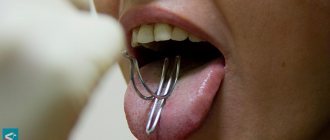Causes of white fever in children
The cause of white fever in a child is a certain disease or other harm to health, but the fever itself in this case acts as a reaction to what happened to the child.
One of the cases is the appearance of an infection in the body of a small patient, and then the body reacts to it in a similar way. White fever in a child quite often becomes a consequence of such a common disease as ARVI. In addition, the prerequisite for it will be various types of trauma, swelling, burns, swelling and hemorrhage.
Also, significant emotional stress of a stressful nature can lead to this manifestation. It is quite capable of leading to white fever in a child and intense pain shock.
In general, we can name the following five key conditions that can cause this condition in a young patient:
- infectious lesion in the acute stage;
- infection with a virus, if the patient has a respiratory illness, then such a symptom may appear on the first day;
- bacterial infection for which incorrect therapy was carried out;
- a disease caused by inflammation, including pneumonia, otitis media, tonsillitis, rhinitis, pharyngitis;
- somatic diseases (both chronic and acute).
Language
Doctors of the old school began the examination with a request to stick out the tongue as much as possible, even if the stomach or back hurt. The tongue is a mirror of the gastrointestinal tract; all our diseases are “written” on it no worse than on a prescription form.
If there is a constant yellow or white coating on the tongue, this indicates a problem with the functioning of the stomach or intestines. You should also be wary of the so-called “geographical” patterns on the tongue, which are often observed after long-term use of antibiotics or with intestinal dysbiosis, a lack of beneficial bacteria inhabiting it.
Symptoms of white fever in children
White fever in a child occurs in three stages.
- An initial sharp rise in the baby's temperature.
- Subsequent stabilization of this indicator.
- A drop in temperature to normal (can be either sudden or gradual).
Symptoms of this condition include fever, although the child's palms and feet feel cold. The baby's skin is pale, and if you press on a certain area, the white spot on it remains for a long time. The reason is that due to severe spasm in such an area, blood circulation is impaired.
The little patient is lethargic and weak and does not want to eat. Arrhythmia may also occur, and the baby’s body may become dehydrated.
It is worth remembering that these symptoms indicate that the child’s immune system has been put into action; as a result, the body, raising the temperature to 38.5 or 39ºC, ensures that the protein of foreign origin, which has entered the system from the outside, coagulates. The problem is that white fever is a dangerous disease, because if the temperature persists for a certain time, convulsions can begin, and dehydration will also occur. As a result, the child's life will be in danger.
In general, this condition is most often observed in children whose ages range from birth to three years.
When should you see a doctor?
It makes sense to consult a doctor if the temperature persists for a long time and does not want to subside. Also an alarming symptom will be the child’s general weakness and difficulty breathing. If the condition of a small patient is of concern, you need to call a pediatrician.
In the most serious cases of white fever in a child, a doctor can best determine what to do about the condition. Of course, in many cases, parents prefer to deal with the temperature on their own, but it is the doctor who will be able to accurately determine its causes and develop optimal actions.
Diagnostics
Diagnosis of white fever requires repeated temperature measurements to record that it has reached 38.5 or 39ºC. It is also necessary to check his palms and feet to see if they are cold (this is a symptom of this condition).
Treatment
It should be clearly established that this is truly dangerous white fever. Treatment of a child if his temperature has simply risen to 38.5 or 39ºC may not be necessary if he feels relatively comfortable in this situation.
The room in which the patient remains must, in any case, have just a warm temperature; there should not be heat there. It is necessary that the air is humidified; there is no need to wrap the baby up.
Drink should be given to him in plentiful quantities, and food should be given whenever he wants. Moreover, if the baby abstains from eating food even for quite a long time, you still cannot force him to eat. If the child already does not have enough strength, then all the remaining strength can be spent on digesting the food received, which will not improve his condition. The recommended drink is various fruit drinks and raspberry jam diluted in water; you can also give water, the main thing is that it is all warm and not hot. But, for example, such a very popular combination as milk and honey is actually not recommended in case of a sharp increase in temperature. The reason is that the milk curdles inside.
Since white fever in a child should be treated, first of all, by fighting the fever. The temperature, when it rises above 39 degrees, should be brought down by giving the child an antipyretic.
Medicines for white fever will be prescribed to the child by a doctor invited by the parents, who will first determine the cause of the little patient’s condition.
- If a sharp increase in temperature occurs as a result of an infection that is of bacterial origin, then the child needs to be prescribed antibiotics, but an antipyretic is not required, since they can bring down the temperature itself, but this will only camouflage the fact that the cause could not be dealt with.
- The doctor can also prescribe both an antipyretic and a second drug, the function of which is to influence the source of the disease, in particular, these can be antiviral drugs, as well as cough medicines.
It should be borne in mind that the effect of the antipyretic takes time. If only half an hour has passed after taking it, then with a significant probability the temperature simply will not have time to drop. It makes sense to wait for several hours, and after that in most cases it will go down.
At the same time, a drop in this indicator in a child from 39º to 38ºC would be quite acceptable; it would also be nice if it drops by half a degree, this will also mean that the body is coping with white fever. At the same time, it is not worth giving the baby antipyretics again, after he has been given the amount prescribed by the doctor. An overdose of these drugs can cause hypothermia when the child's temperature drops below 36.6ºC.
In addition, you can wipe the child using a damp sponge, but you should not rub him with alcohol. This compound negatively affects the body of a small patient. If it is abused, intoxication may result, after which his condition will only worsen.
It is also advisable for parents or other older relatives to remain close to the child. The fever when the child is alone is aggravated by the fear that he experiences in such a situation. When an adult is with him, this has a beneficial effect on him, after which his condition improves.
Nervous system
Usually parents pay attention to body temperature: normal means everything is fine, high means you need to give aspirin. But even with this everything is not so simple. For example, the temperature rises, and your hands feel like ice. This indicates a spasm of peripheral blood vessels.
If your baby's hands are constantly cold, this is a signal that he has increased excitability of the nervous system. In general, a violation of thermoregulation indicates the vulnerability of the child’s body, the inability of its nervous system to cope with stress. This also applies to such a feature of the child as sweating. Constantly wet palms, constantly wet underwear, even if there were no violent games, are a signal of problems in the nervous regulation of the body.
Other signs also indicate a state close to neurosis - the baby likes to fiddle with something in his hands, bite his nails, often suddenly shudders, talks in his sleep (it’s okay if this happens from time to time, but if it happens every night, it has It makes sense to consult a neurologist).
If a child is constantly nervous, excitable, if it is difficult to captivate him with a game, and once he starts playing, he can no longer stop, forgets himself, reacts aggressively to attempts to intervene, throws prolonged tantrums, then you should not attribute everything to a bad character - perhaps these are symptoms of increased intracranial pressure . It is recommended to show such a child to a neurologist.
Disturbances in the functioning of the thyroid gland can also lead to excessive excitability of the nervous system. In this case, the baby may have a rapid heartbeat. Slightly bulging eyes also indicate excess thyroid hormones. In this case, consultation with an endocrinologist is necessary.
How to make an appointment with a pediatrician
If the situation has become urgent, then you can dial an ambulance from our clinic, whose phone number is +7 (495) 229-00-03. You can also contact us through our website using the feedback form.
Our medical center staff act as quickly as possible. Especially if we are talking about an emergency situation that requires urgent hospitalization. The clinic carries out diagnostics and immediately prescribes the optimal treatment method that will help your child overcome all the difficulties of the disease as quickly as possible.
Appetite and sleep
Parents often pay attention to the most obvious things: for example, appetite and sleep. Does poor appetite indicate anything? Of course, since this is a reflection of the general state of the baby’s nervous system, its balance and comfort.
If a child is, as they say, “skin and bones,” and has bruises under his eyes and often catches colds, you can suspect a tendency to tuberculosis, and in this case you need to see a TB doctor more often. The appetite must correspond to the energy expended by the body, and when the child is inactive and likes to play “quiet games,” it’s okay if he eats a little. If, on the other hand, he runs around all day and comes home “with his tongue hanging out,” you most likely will not have to persuade him to eat properly.
However, if a child eats a lot, regardless of his physical activity, and does not gain weight, this may also indicate a disease, for example, the presence of worms or some kind of psychological problems.
Parents are also worried about the child’s poor sleep. Most often, healthy children do not wake up at night, but may have difficulty falling asleep. Think about how often you neglect your child’s daily routine—whether he goes to bed at a strictly set time, doesn’t watch scary cartoons or action films at night, or spends the evening at the computer. All this excites the child’s nervous system and confuses his biorhythms.
On the other hand, the approach to each child should be individual.
If the child
- restless or feeling weak
- cannot tolerate muscle pain, headaches,
- there is nausea,
- no appetite,
then you must first use physical methods to improve the child’s well-being
:
- put to bed - this way the body will retain strength to fight infection and calm the child;
- drink fractionally with water or sweetened warm herbal tea with chamomile, linden, cranberry juice;
- provide access to fresh air;
- If there is an appetite, feed small portions of warm food (for example, soup, thin porridge with water, a light breakfast).
Also, according to the clinical course of the fever, apply additional cooling measures.
For “red” or “pink” fever
- the baby's body feels hot to the touch,
- skin is red or pink, moist,
- The child himself does not complain about his health, is active, and does not lose his appetite.
In this case, the child must
- undress,
- wipe with a towel soaked in water at room temperature,
- apply a cool compress to your forehead,
- drink water at room temperature
- and be sure to call a doctor.
For "white or pale" fever
- the child’s limbs and body feel cold to the touch,
- lips and nail beds take on a bluish tint,
- skin is pale and dry,
- There is a disturbance in well-being: the child is lethargic, delirium is possible.
In this case, the child must
- warm by rubbing the limbs with your hands or using warm water (other means are prohibited!),
- put on socks
- cover with a blanket
- and drink warm tea or water.
The use of antipyretics for such symptoms is ineffective - you need to urgently call a doctor!
The exception is children at risk, whose temperature is reduced above 37.1 degrees. These are kids,
- having diseases of the nervous system,
- experiencing convulsions due to a rise in temperature,
- those suffering from chronic diseases of the circulatory system, respiratory system or hereditary metabolic diseases and other risks (overheating, symptoms of dehydration, etc.).
Febrile seizures are diagnosed more often in children under 6 years of age with temperatures above +38 degrees, as well as in children with pathologies of the nervous system at any temperature. It is recommended for such children to reduce their temperature to febrile levels (not higher than +38.0) or to those values recommended by a neurologist.
Usually, against the background of an increase in temperature, the child’s heartbeat and breathing rate increase: the respiratory rate increases by 4 respiratory movements for every degree above +37.0 degrees, and the pulse rate increases by 20 beats per minute for every degree. However, against the background of diseases of the cardiovascular system and respiratory organs, such as developmental defects or heart rhythm disturbances, inappropriate increases or decreases in pulse and breathing are possible. Such children, on the recommendation of a cardiologist and pulmonologist, are prescribed antipyretics up to febrile levels (i.e., not higher than +38.0 degrees).
Children with hereditary metabolic diseases (diseases of the thyroid gland, kidneys, liver, disorders of the immune system and others) and children with imperfect compensatory mechanisms of thermoregulation during fever (these are some children from birth to 2 months) are also prescribed antipyretics on the recommendation of related specialists funds up to febrile numbers.
Overheating - an increase in body temperature due to additional exposure to heat
- prolonged exposure to the sun,
- wearing too much clothing
- excessively wrapping children).
The risk of overheating is associated with the risk of heat stroke. It manifests itself
- not only at elevated temperatures,
- but also in impaired consciousness, convulsions,
- disorders of the heart and breathing.
First aid is to call the ambulance team “112”.
Before the doctor arrives
- undress the child
- move to a cool place or shade,
- provide access to fresh air or blowing with a fan (but not cooled air!),
- apply a cold compress to your forehead,
- wipe the body with cool water or wrap it in a sheet moistened with cool water.
Antipyretic therapy for children should be prescribed strictly individually, taking into account clinical and anamnestic data.










